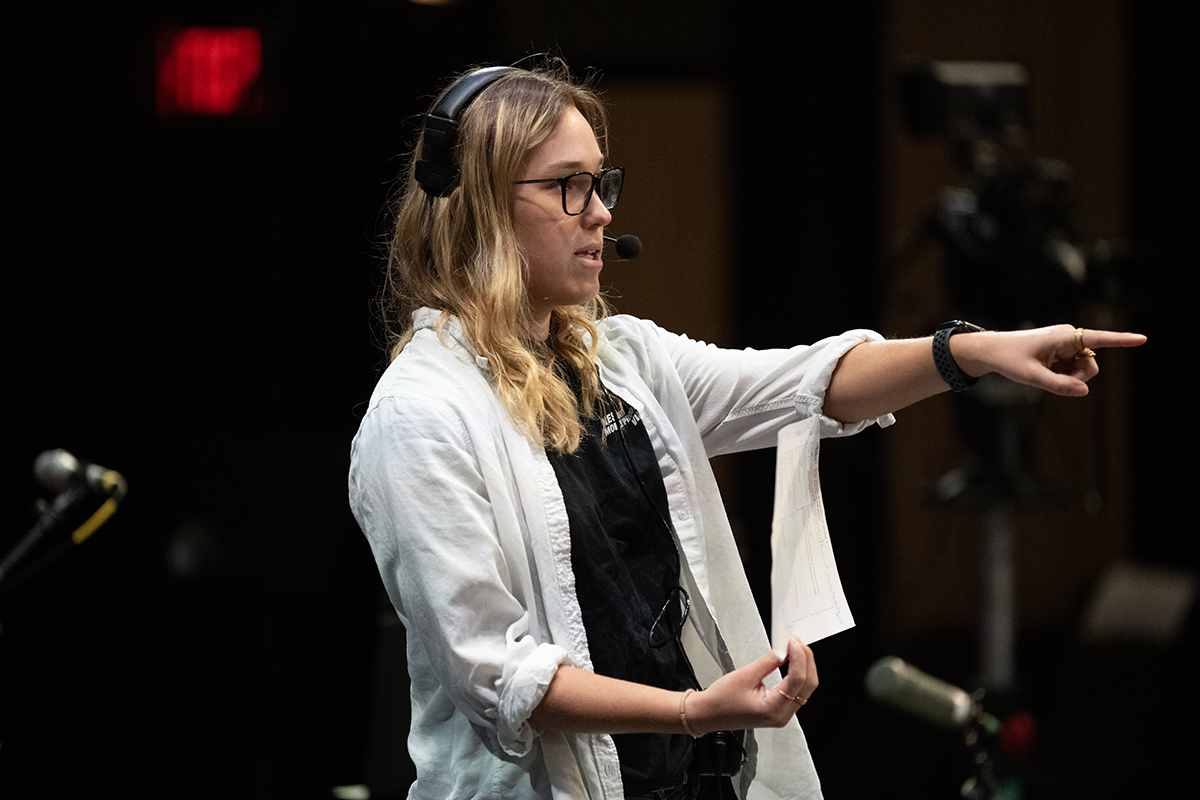
For 15 Years, The Nite Show Helped Educate Husson Students
Published on: October 10, 2025
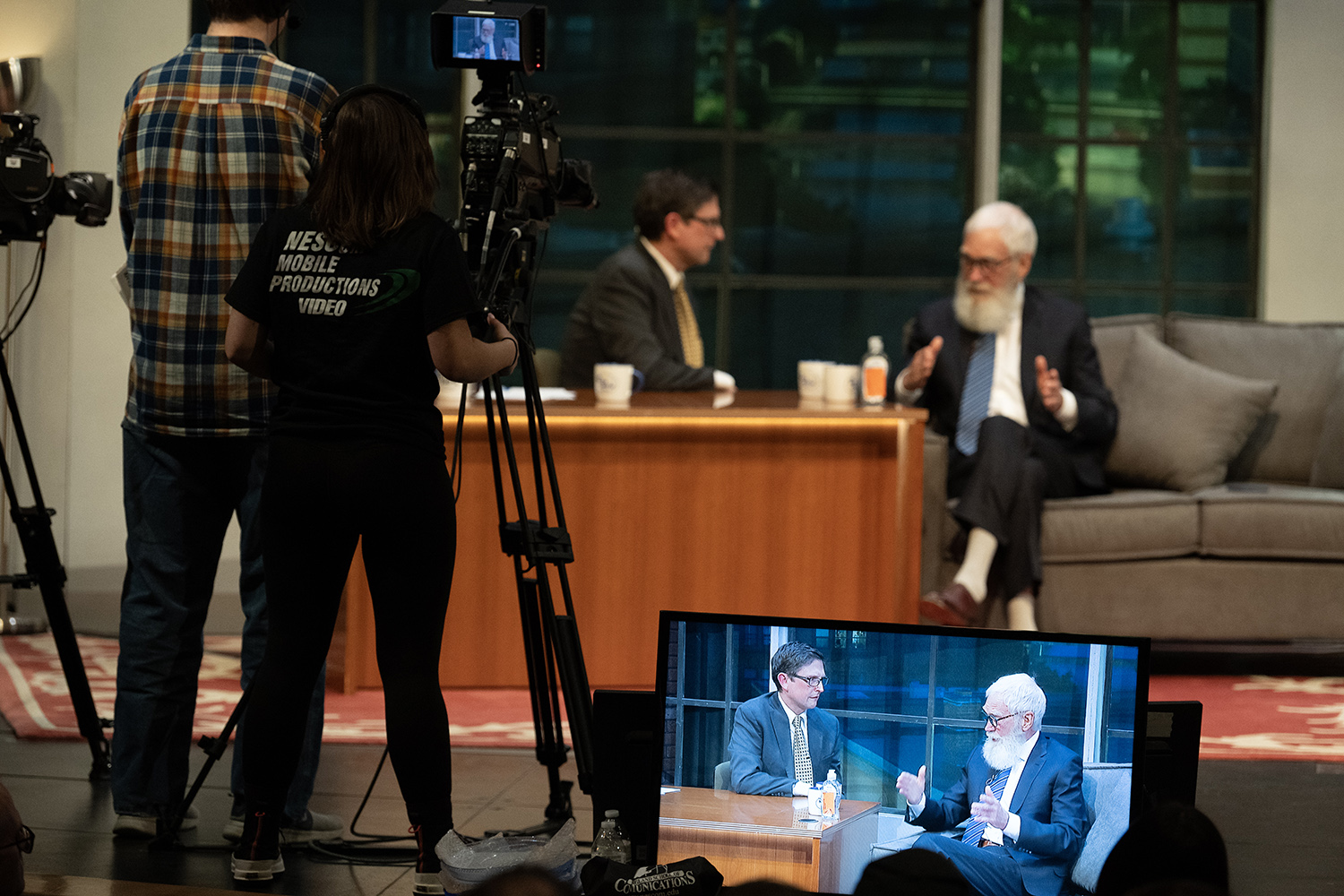
Long before the roar of the audience, before Danny Cashman in a suit and tie stepped out onto the stage with a wave, before The Gracie Theatre was transformed on April 23 for the last regular taping of The Nite Show with Danny Cashman, the crew was there. Sets had to be built. Audio cables had to be run. Cameras had to be set up. Then the testing process began, ensuring that every cable, mic, connection and moving piece would run as intended.
That crew was composed entirely of students, staff and faculty of the New England School of Communication, as it had been since the show returned to broadcast 15 years earlier.
The Nite Show has been a fixture of Maine late nights since 2010. And since then, the synergy between NESCom and the show has given countless students a real-life look at broadcasting.

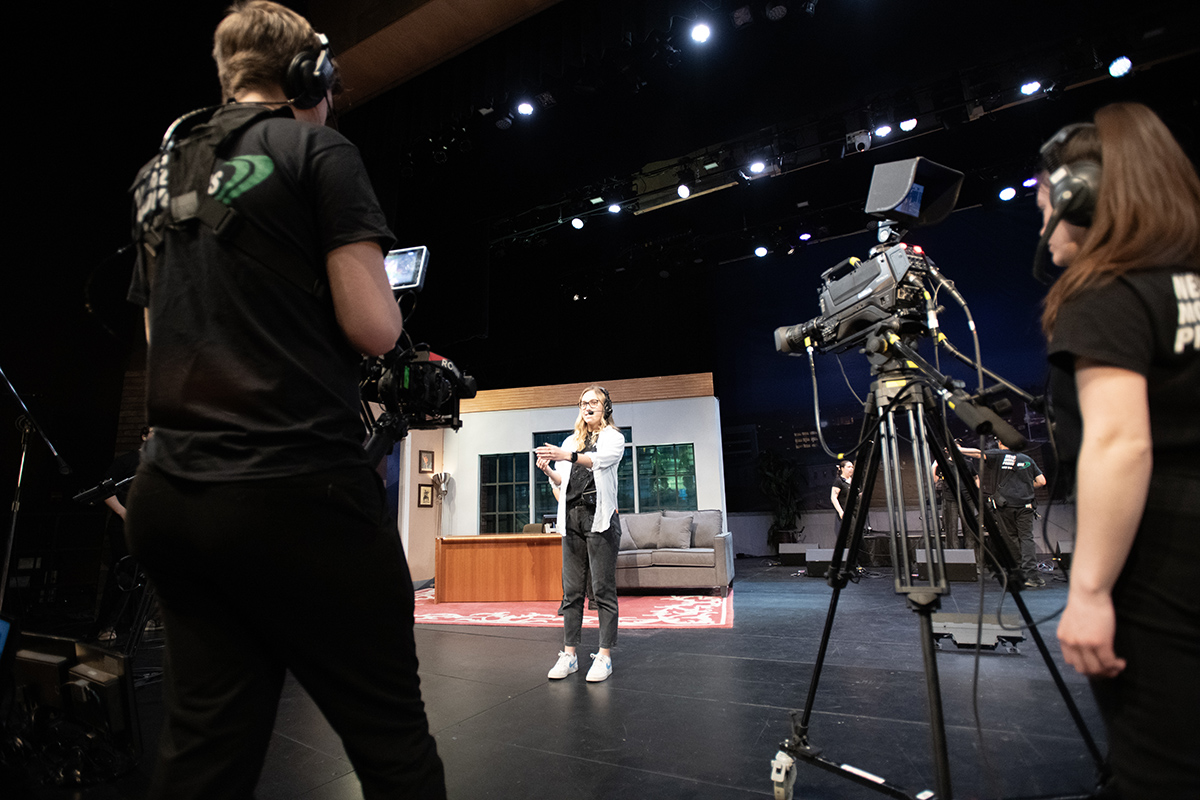
“It’s leaving an amazing legacy behind, and it’s something that students throughout the decades that have been involved will always remember,” said Katie Benson, a fourth-year video production major at Husson, who directed the show in its final year including the final episode taped on Saturday, April 26.
The show has been a unique part of Husson’s curriculum — a professionally-recognized statewide broadcast that reached an audience across Maine, regularly outperforming national programs like Saturday Night Live! for local viewership. That fact was huge for students trying to find a start in the media world.
“It was so fun that for 12 hours a month you could work with your friends and make statewide TV,” said Cindy Miller, a 2020 Husson alumni who worked as a director for the show. “That’s a cool thing to say for most people in their late teens to early 20s. It was really fun to say that at such a young age I was directing a show that the state of Maine would see.”
That legacy goes far beyond just its impact on students, however. The years of technological change and cultural change have given the instructors a better chance to work alongside students to produce content relevant in the evolving world.
“It’s made us better instructors,” said NESCom Director of Operations Rodney Verrill.
The Nite Show influenced several aspects of how Husson University teaches across its curriculums. It became a lot more important to everyone than just filling out a class credit.
Watching the whole process gives an understanding of the deep learning that took place while creating a 30-minute show. Prep work began in the early morning. Students handled the setup of equipment around The Gracie Theatre that allows the show to be recorded. From audio lines to cameras to microphones to set setup, everything was carefully added to the theater, adhering to exact specifications.
At 10:41am, Verrill sat at Dan Cashman’s desk. A student sat on the chair beside him. Line checks were done.
Assistant Professor Eric Ferguson instructed from the soundboard.
“Please use your ears and put it through a speaker,” Ferguson said.
Everyone stopped. It quieted. They tested the mics one at a time, going in a predetermined order.
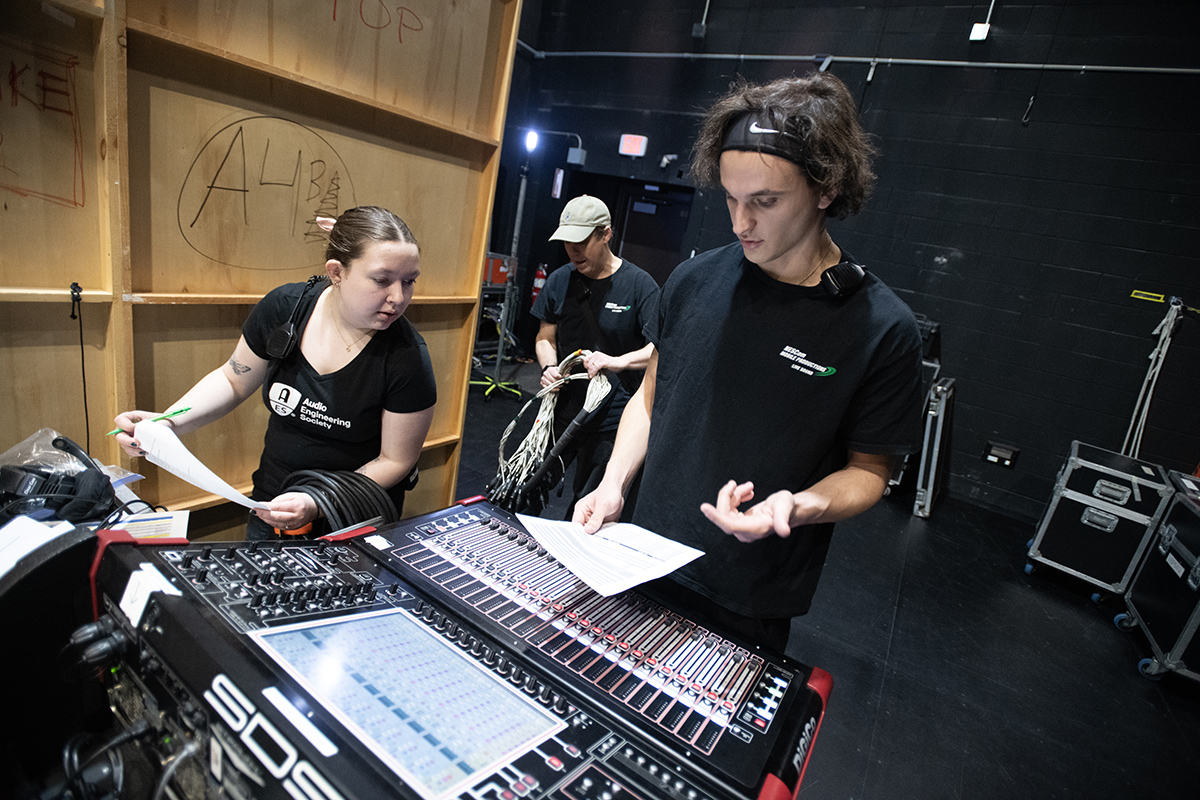
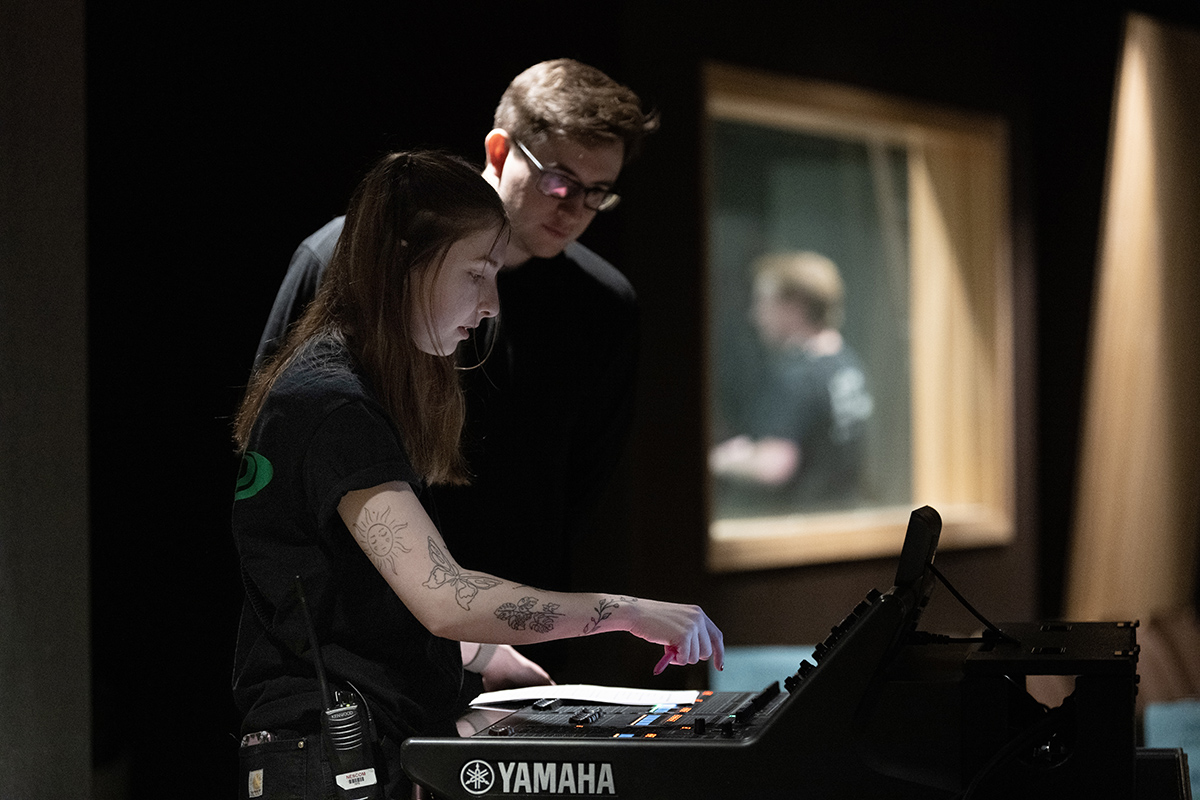
The microphone Mark Nason would use later that night to warm up the crowd had no return. Students and instructors hopped into motion, fixing it and then retesting it. A voice played loud over the speaker. Minus 20 in vocals, someone said.
“Can you gaffe tape these lines here so they aren’t a tripping hazard,” Ferguson asked a student.
Then the theatre cleared. Mic checks continued. Meetings happened in the hallway and the lobby. In the theatre, the phone was tested for a segment, comparing the sound quality on a cell phone versus a landline. The landline worked better.
Early History of The Nite Show
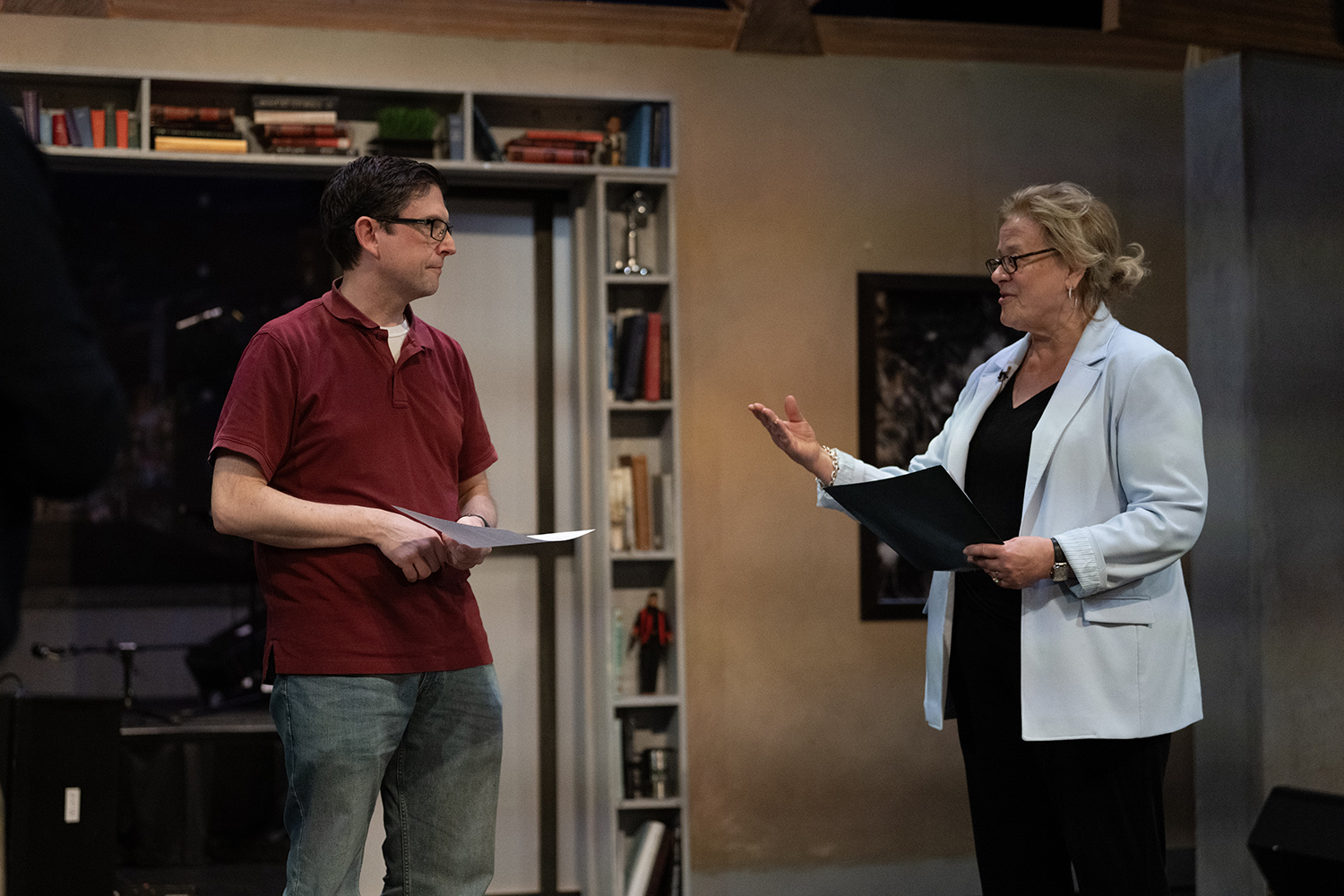
The Nite Show first launched in 1997 when Cashman was a student at UMaine Orono. It was a small production that garnered a small following. That version ended in 2002 after Cashman graduated.
By 2009, Cashman had worked in radio, lived outside the area and was back. That’s when an opportunity presented itself. His friend John Easton, an instructor at NESCom, asked NESCom’s Director of Operations Rodney Verrill if the school would be interested in running production on a new iteration of The Nite Show. It would have a statewide audience and could be a good learning tool.
Verrill was reluctant to agree, and wanted to have a conversation with Cashman.
“It became clear to me that this wasn’t about Dan and his ego and his desire to have his own show,” said Verrill. “It was as much about providing our students the opportunity to learn in a way that we historically have taught. And that’s a very tactile road to their education, that experiential learning process has been a cornerstone of what has made our students so successful.”
Planning began with trying to find out exactly how The Nite Show could be brought to the whole state of Maine. In late 2009, Cashman signed on with MyNetworkTV, a national programming service for local content between 11pm and 1am.
The show was initially taped at Next Generation in Brewer, a unique venue located in the back of an antique shop. NESCom students, faculty and staff would transport the school’s mobile unit to Brewer and maneuver equipment in and out for each taping around displays and through narrow aisles.
“It was a great start, but it was riddled with things that could always go wrong,” Verrill said.
But Cashman was a bit more blunt about it.
"It was a chaotic mess," said Cashman.
The whole process meant 16-hour days for students and staff. Due to the small space, there was a lot less control over the five cameras used for production as well as the audio. There was also less room for an audience than was typical for national night shows. The venue could only hold around 75 to 85 people, including the students, staff, band, and guests.
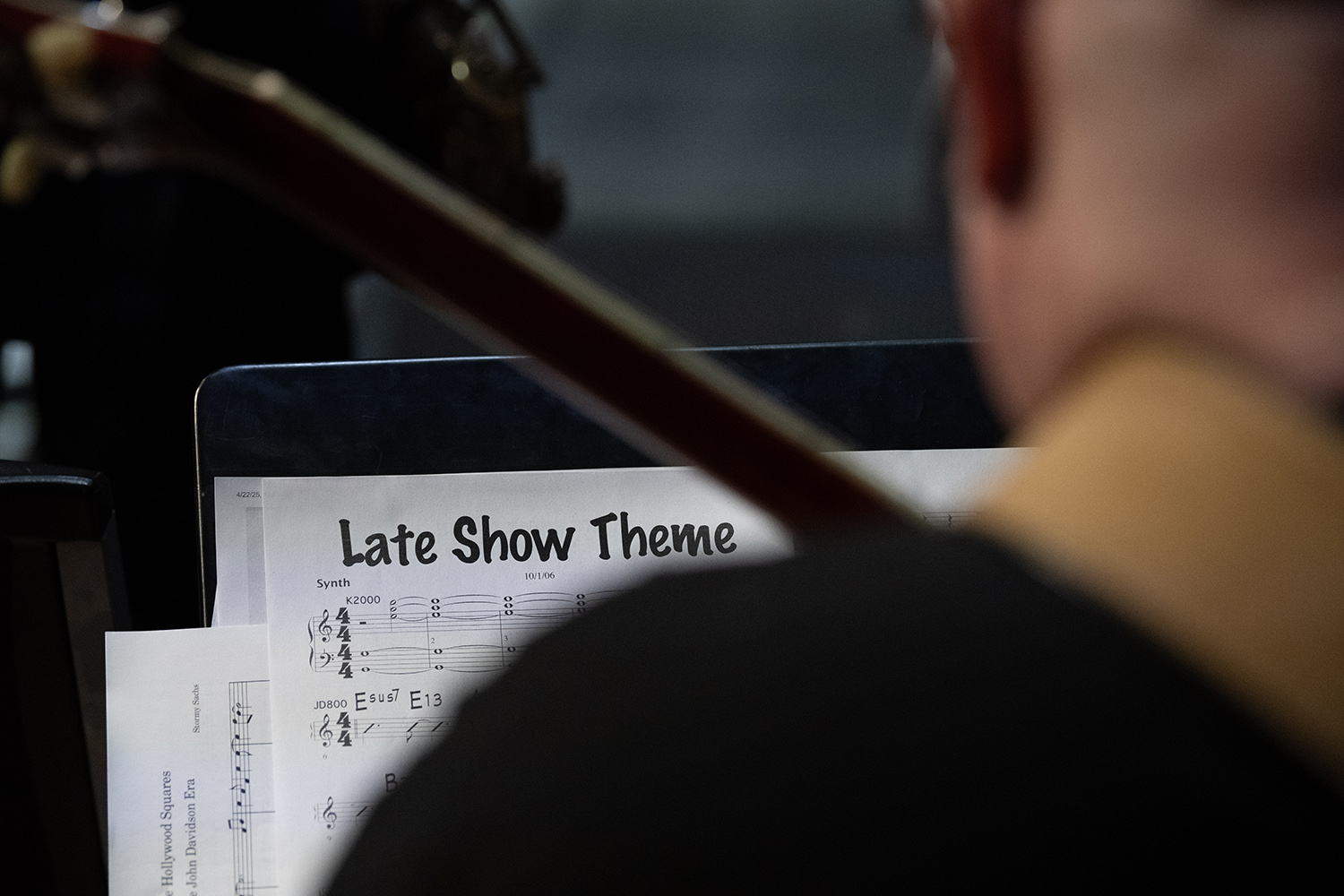
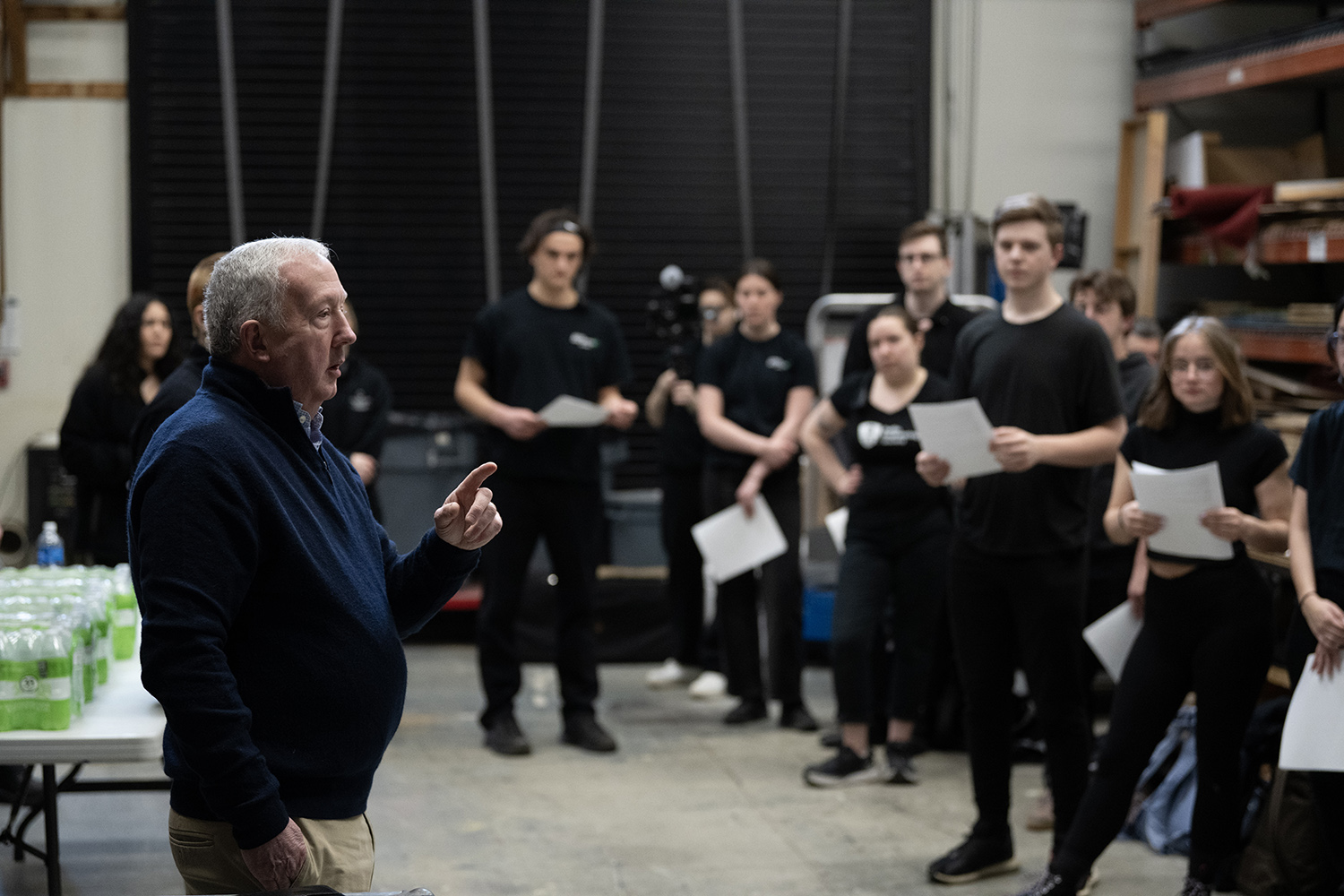
“It was about bringing a group of people together to produce local content,” said Verrill. “He was here to produce a show. But first and foremost, he was here to make sure that the students got the experiential learning that they needed to make them better, and that was never a question. He has been as much an educator for Husson as any one of the instructors because of his patience and willingness to allow the students to make mistakes.”
Four years later, in 2014, the show moved to The Gracie Theatre on Husson’s campus, sparking a new era for the production in which the show’s production equipment could be set up and tested in advance. NESCom was able to upgrade to an eight camera system streamed directly to the NESCom Mobile Productions unit via Husson’s newly built fiber infrastructure. The two meager audio boards used at the previous venue turned into a set of four kept in-house with the capabilities to audio mix the host and guests, band performances, and audience reactions to fit the show however needed.
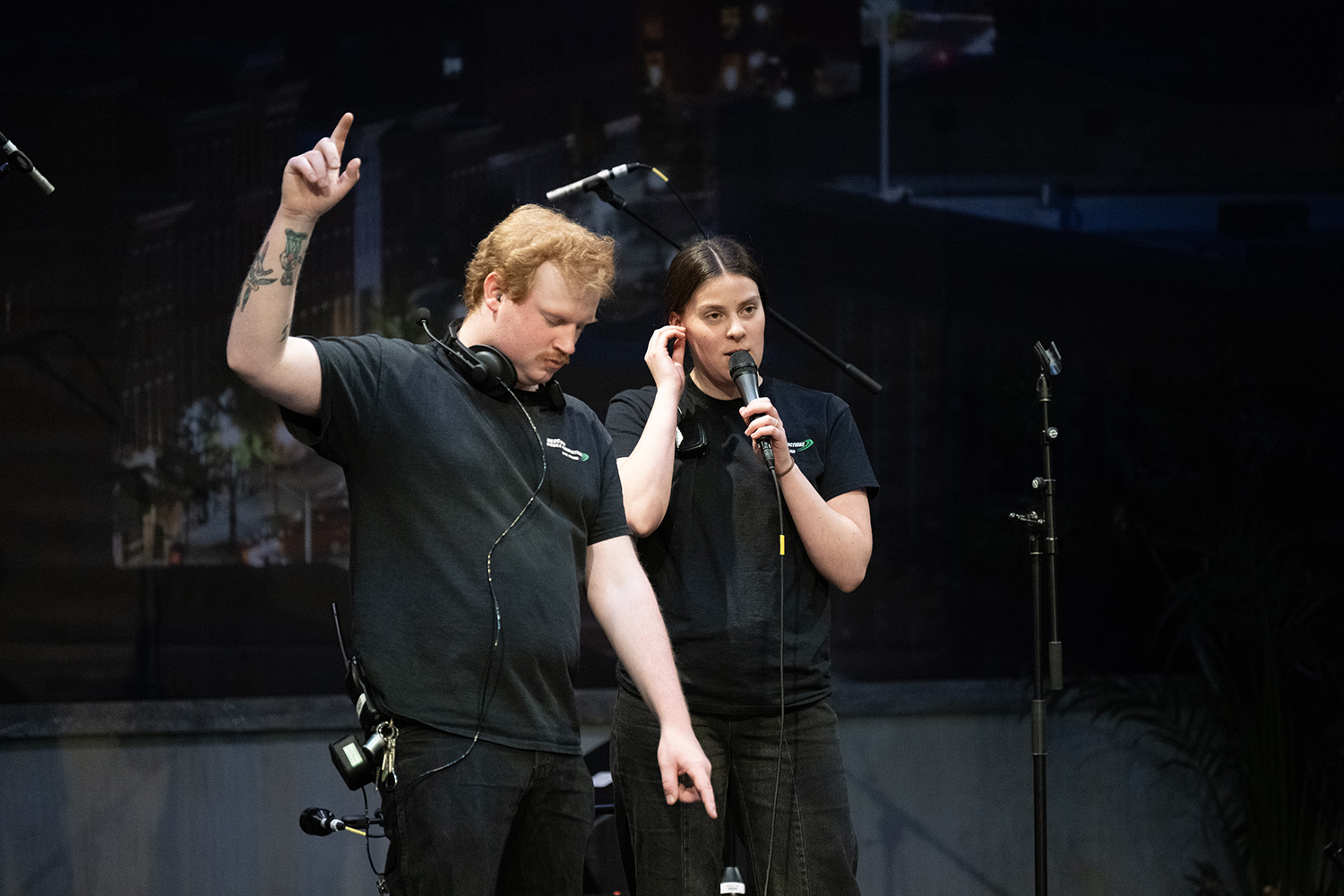
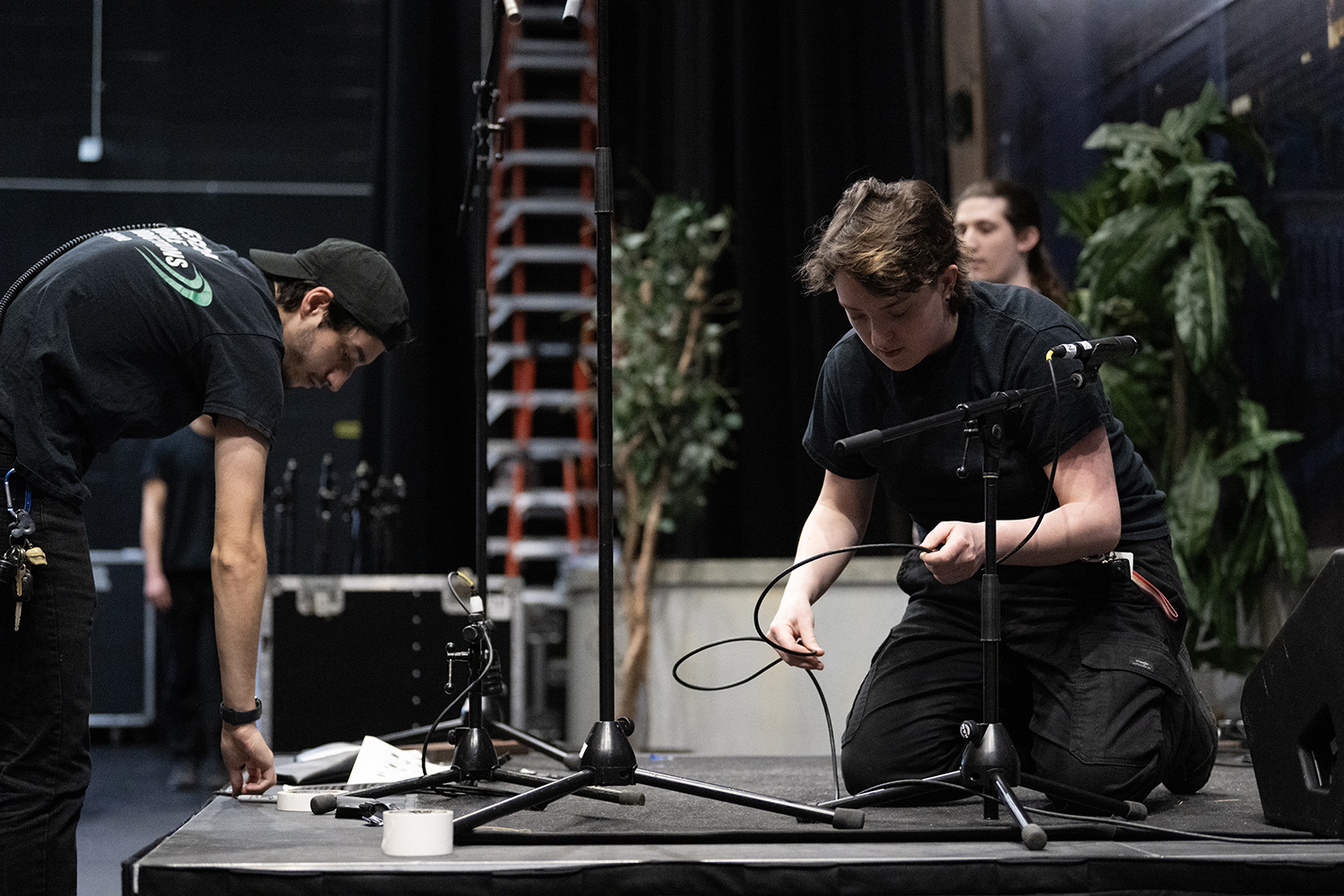
Students could work in their roles much more effectively too. With a much more controlled educational environment behind the scenes, students took positions as audio techs, camera operators, producers, and even directors of the show.
“I learned everything there,” said Miller, who worked as a director for the show before graduating in 2020. “It was one of my first real exercises of ‘this is how TV is done.’”
After the move, recording days usually began at 8am, when Eric Ferguson, an audio professor, would arrive with a team of audio engineering students to set up the audio boards for the show. They would work until 1pm, when the video team would arrive to set up the cameras and test the broadcast. At 4:30, the house band and musical guests would arrive for practice and sound checking, and the doors would open for audiences at 5:30. Cashman would enter on stage at 5:55, and the recording would start at 6pm sharp each session.
The Nite Show also occasionally went on the road. Shows were broadcast from venues like the Bangor Opera House and Pushaw Lake around the Bangor metro area, as well as in Houlton, Westbrook, and at a prize winner’s house in Ellsworth.
In 2018, there was even an episode during a snow day. Classes were cancelled, but the show was set to run anyways. Cashman came up with the idea to do a weather segment outside the Gracie during the blizzard, and even called a weatherman friend of his to do it.
“It was one of the funniest special projects I’ve been on,” said Miller.
On Wednesday, April 23, first year students followed Professor Ed Goguen around as he explained each element of the setup and testing. They continued out to the truck, rapt. This was their first exposure to real television production.
This is part of the learning. They start with the introduction, and build to the partaking in the taping step by step, year by year. And though this show is ending, NESCom has its eyes on the future. The value in broadcasting a show from The Gracie has been clear.
Later, the crew gathers backstage for pizza. Group photos are taken. There’s a collective step back before the taping begins to gather themselves. This is the last moment before the action.
That evening, backstage, a camera operator stands as David Letterman enters the darkness lit in blue. They talk. She tells him about her experience working on the show and the opportunities Husson has provided. He’s impressed.
After The Nite Show
The show’s final episode first aired on Saturday, May 17, and will have an encore on Saturday, October 11. Danny Cashman’s The Nite Show was the last of its kind in the US. No other locally-operated late-night talk shows are being filmed in the United States. But Cashman believes that his show style won’t end with him.
"If there's somebody out there who wants to pick up the torch like this and run with it, I would be as supportive as anybody to help," said Cashman. “It’s a lot, but it’s incredibly rewarding if you grew up wanting to do it.”
The Nite Show leaves a lasting impression on Husson. The show has been a unique part of Husson’s curriculum that couldn’t be found elsewhere. The professionally-recognized statewide broadcast reached an audience across Maine, regularly outperforming national programs like Saturday Night Live! for local viewership, while also giving students real life experience in television production.
“Just because the Nite Show will be in its twilight and going away, that doesn’t mean that we’re not going to continue that same type of educational experience for our students like we’ve been doing for decades,” said Verrill.
At age 47 and a father of two growing daughters, Cashman feels like this is the best time to leave the show and focus on his children.
"I'm so lucky,” said Cashman. “I got to do my dream for over 15 years."
Verrill sees this as the optimal time to end this project.
“We’re leaving on a high note,” said Verrill. “This experience for all of us is ending in such a positive way.”
But he also suspects that this won’t be the end of Cashman’s partnership with Husson. Whether it be in a classroom setting, or another show for the state of Maine, he hopes Cashman will come back to help the students of Husson in the future.
“This isn’t the end. It’s a transition,” said Verrill.
— Sarah Walker Caron & Rin Gately
